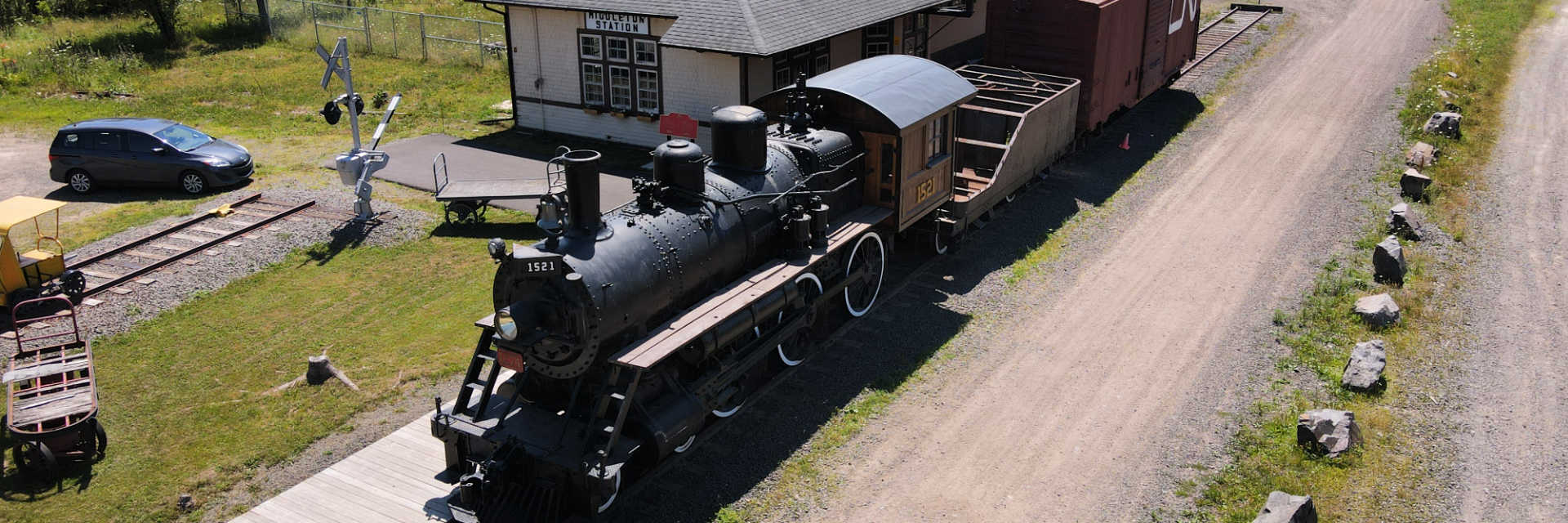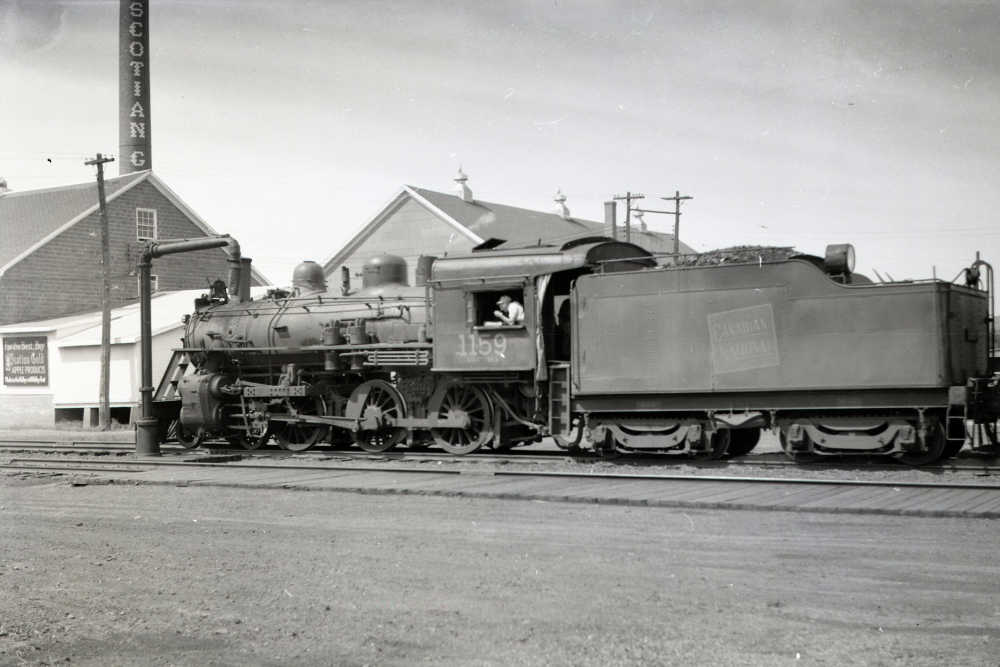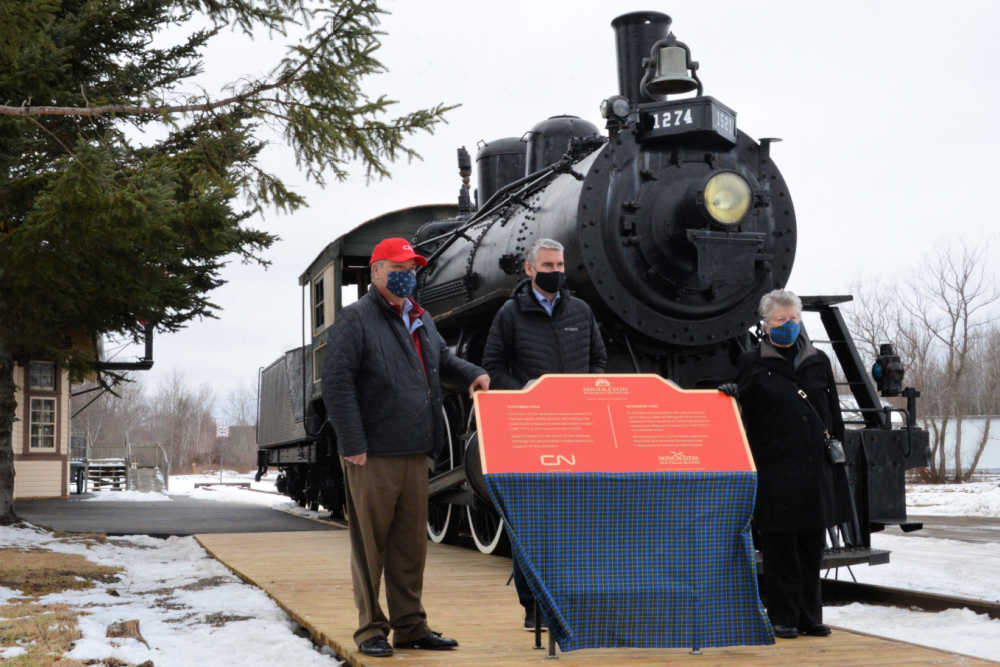
10 Wheeler (4-6-0) CNR 1274/1521
On Friday, July 7, 1905, the Locomotive & Machine Company of Montreal, a predecessor of Alco-affiliate Montreal Locomotive Works delivered Ten-Wheeler 1274. MLW went on to become Canada’s foremost builder of steam locomotives.
The Canadian Northern Railway paid $14,801, about $400,000 in 2022 dollars. It was the second of five similar locomotives ordered at the same time and completed by December 1904. It was originally numbered 213 but was renumbered 1274 in January 1912 and given the class designation H-6-B. This number was retained by the Canadian National Railways which succeeded the Canadian Northern in September 1919. CNR changed the classification to H-6-b. In January 1956, the CNR renumbered it to 1521 at Point St. Charles Shops in Montreal as new GMDL SW1200RS diesels encroached on the original number series.
It served the Canadian Northern in Western Canada for many years as it was assigned to Fort Rouge roundhouse in Winnipeg in February 1914. We understand that it served the CNR from 1923 to 1959 in Western Canada, northern portions of Quebec and Ontario. For example, it was photographed in 1927 by Cyril B. Littlebury in Vancouver and was assigned to Cochrane, Ontario in August 1957. Retired at Limoilou shops in Quebec City at the end of 1959, it languished in scrap lines in St. Rosalie, Quebec, and Turcot Yard in Montreal.
Andrew McLean of Don Mills Ontario acquired 1521 in May 1961 for display at Gravenhurst, Ontario. To maximize its visual appeal in attracting travellers to his roadside business, it was painted in a variety of pastel colours! The Ontario Government selected it for display at a proposed Science Centre in Toronto in 1965. The Government abandoned their plan, and the engine was sold on November 14, 1969, to R Bennett of Croswell Michigan with plans to return it to operating condition. It was delivered in March 1970.
The Nova Scotia government purchased 1521 in 1989 for display at the new Upper Clements Park near Annapolis Royal. Four semi-trailers were required to deliver the engine, tender and associated parts. At Upper Clements, it was displayed with four retired CN boxcars and a wooden caboose that arrived by rail on a CP Rail connection.

Photo by unknown, Middleton Railway Archives
The engine is of a wheel arrangement and size that would have been seen on the former Canadian Northern route from Bridgewater through Middleton to Bridgetown and Port Wade. Another former Canadian Northern G-16-A Ten-Wheeler 1159 (MLW 4-1913) is pictured while easing up to the water plug at Middleton in the early 1950s. The pictured engine could be about to head to Bridgetown on mixed train M255 that departed at 11.55 a.m. on Wednesdays only in the summer of 1952. It was scrapped in Moncton on Tuesday, March 9, 1954. Ten-Wheelers were versatile engines equally at home on freight, secondary passenger, and mixed trains. Their use in mainline passenger service was somewhat limited by the speed restrictions imposed by their relatively small driving wheels.
The Province of Nova Scotia provided funding to move the locomotive from the former Upper Clements Park to the Middleton Railway Museum in 2020. Preparatory work was conducted by Rick Jacques’ Trailblazer’s firm and Parsons Construction. A.W. Leil Cranes & Equipment of Dartmouth Nova Scotia provided the moving equipment and expertise completing the 54-kilometre move in two days on Friday, December 18, 2020.
In 2021, a decision was made to restore its long-assigned number – 1274 – due to its long-term association with the engine. Accordingly, a replica number plate was cast at the Lunenburg Foundry. 1274 is the fourth oldest surviving CNR locomotive and one of two steam engines remaining in Canada with a high-efficiency Belpaire firebox. The six driving wheels are 63” high. The overall length is 61.1 feet. The locomotive weighs 137 tons which includes ten tonnes of coal in its tender. The tender holds 5.000 Imperial gallons of water, almost 23,000 litres. It received a Schmidt superheater at Winnipeg’s Fort Rouge Shops in February 1914, but originally used saturated steam in its 20” diameter pistons with a stroke of 26.” Stephenson valve gear actuated the pistons on the inclined cylinders. The engine has a 28% haulage rating reflecting its 28,000 pounds of tractive effort or pulling power.
Our engine has always had an open, wooden cab. The cab was replaced in 2021 by our restoration crew using locally donated hemlock in place of the original pine and ash. The aerial photo at the top of this page shows the baffles in the water compartment at the rear and the area where the coal pocket will be restored. We are presently raising $12,000 to restore the top plating and the coal pocket on the tender which deteriorated as acids leached out of the leftover coal.

Photo by Bill Linley
Header Photo by Lee Hopkins

